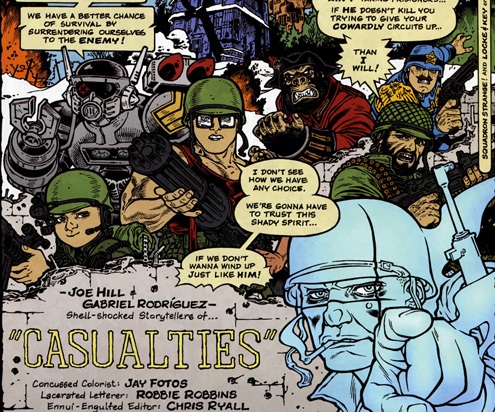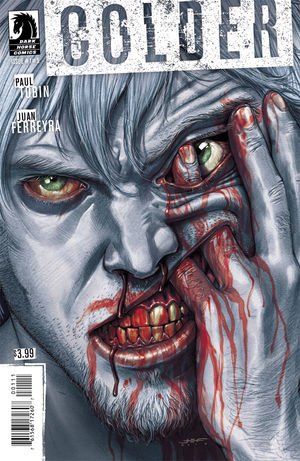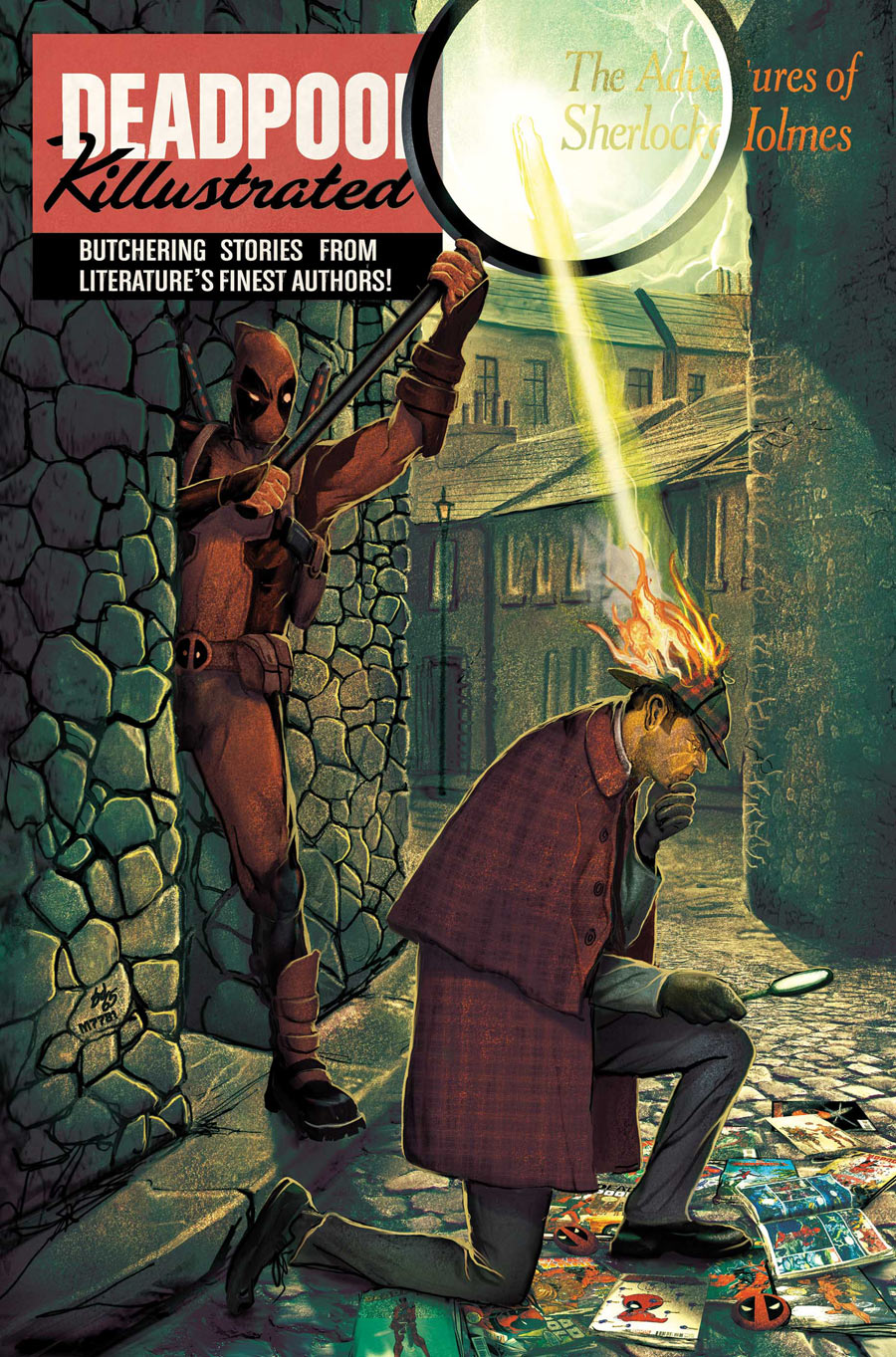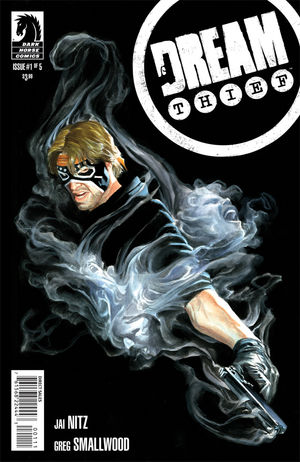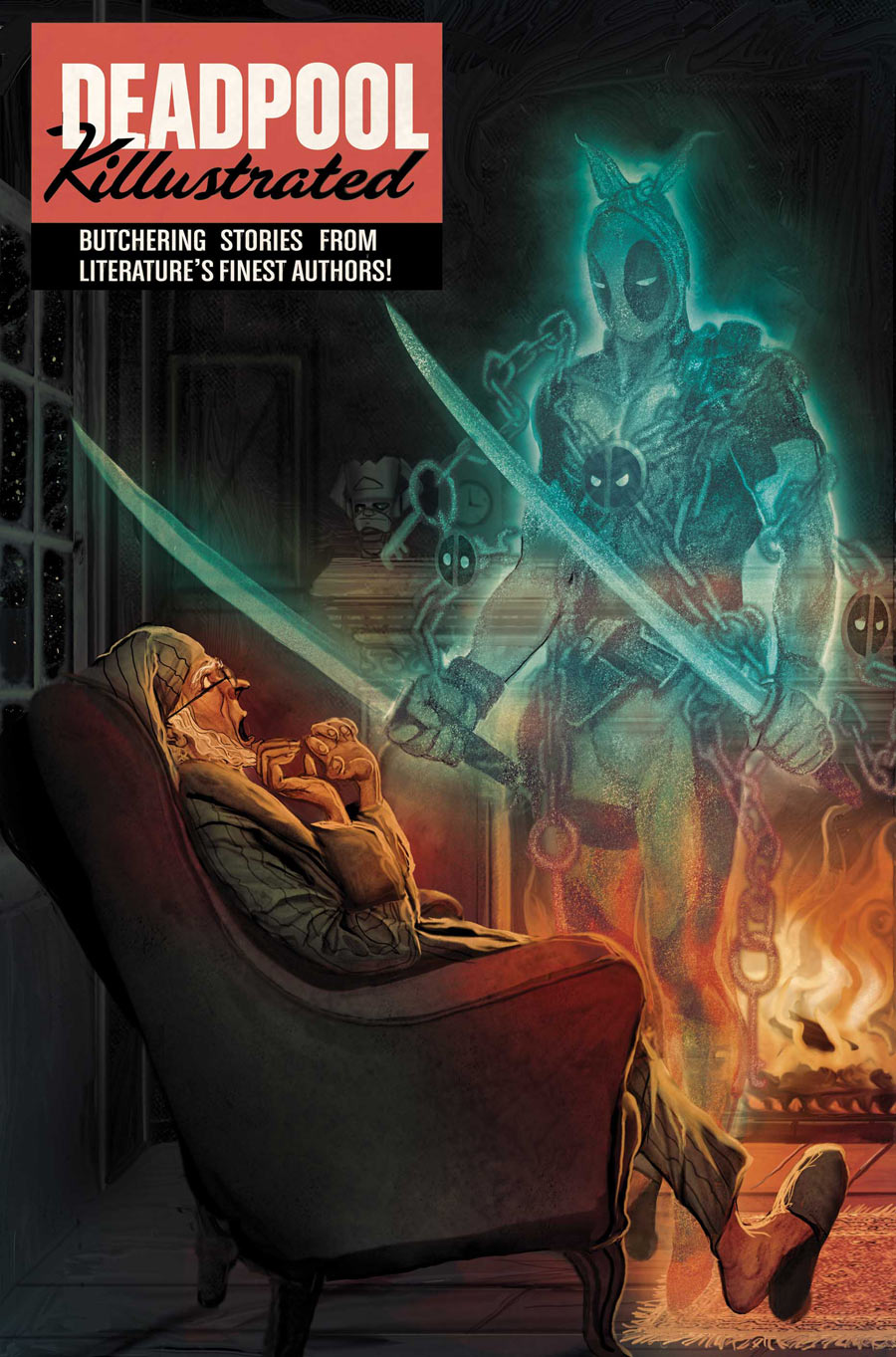written by Brian Azzarello
art by Eduardo Risso
More than any episode of Spaceman yet, "Acts and Man" feels genuinely medial, a chapter in a larger story that doesn't really hold up much on its own. It does, however, bring into even sharper relief the mercenary media and opportunistic low-lifes that seem to overwhelm the series, foils to its outcast hero, Orson the Spaceman.
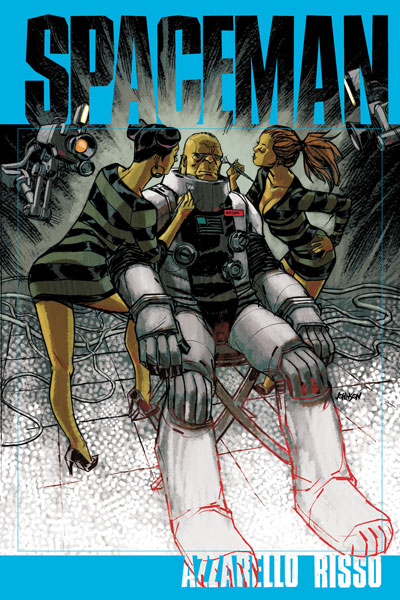 So, it turns out, Tara's got a tracking chip in her skull, which would be hugely helpful in the police search for her, but only the producers of her reality television show seem to know about it, and they're only interested in compelling and dramatic entertainment. And, while camped outside Orson's apartment waiting to capture some film, they get more than they expected when Lilly and her armed thugs crash Orson's hoping to re-kidnap the celebrity girl to collect the ransom for themselves. Instead, once again, Orson outwits his attackers, showing himself to be more resourceful and intelligent than his looks or his reputation, and explodes his own home, subsequently seeking refuge on his salvage barge among the other scrappers. His friendship with Tara continues to develop nicely, particularly her sensitive insight into Orson's sadness and isolation. Orson may feel intuitively protective of Tara, in whom he may see a little of himself, but Tara is the one who can articulate their similarities and their bond. Her reluctant admission that she may need to be returned home, despite already acknowledging that she's enjoying her time on the lam with the spaceman, because she saw a producer of her show during their escape, was more poignant than I expected.
So, it turns out, Tara's got a tracking chip in her skull, which would be hugely helpful in the police search for her, but only the producers of her reality television show seem to know about it, and they're only interested in compelling and dramatic entertainment. And, while camped outside Orson's apartment waiting to capture some film, they get more than they expected when Lilly and her armed thugs crash Orson's hoping to re-kidnap the celebrity girl to collect the ransom for themselves. Instead, once again, Orson outwits his attackers, showing himself to be more resourceful and intelligent than his looks or his reputation, and explodes his own home, subsequently seeking refuge on his salvage barge among the other scrappers. His friendship with Tara continues to develop nicely, particularly her sensitive insight into Orson's sadness and isolation. Orson may feel intuitively protective of Tara, in whom he may see a little of himself, but Tara is the one who can articulate their similarities and their bond. Her reluctant admission that she may need to be returned home, despite already acknowledging that she's enjoying her time on the lam with the spaceman, because she saw a producer of her show during their escape, was more poignant than I expected.Azzarello often receives critical and fan admiration for his creative and expressive use of language, but I have to admit that five issues into Spaceman, I don't much care for the futuristic slang he's developed here. He's certainly fond of wordplay, and some usage may be motivated by folk etymology—"ear" for "hear," for instance, or "funs" for "funds"—and analogy—"brain" for "think" on the model of ear/hear—but it's more distracting than illuminating. However, and I have to admit surprise at this, Azzarello has turned this colloquial register into something more in the mouth of Tara, who more than once in the last few issues has stumbled in the slang and corrected herself: "No, what I mean, I thought...I mean braind...Lilly was your girlfriend" (Spaceman #5: 6). She doesn't always—"I think was Diana" (17)—but it shows a consciousness about language on the part of its fictional speakers that helps develop them rather than just give the series a futuristic aura.
[May 2012]

